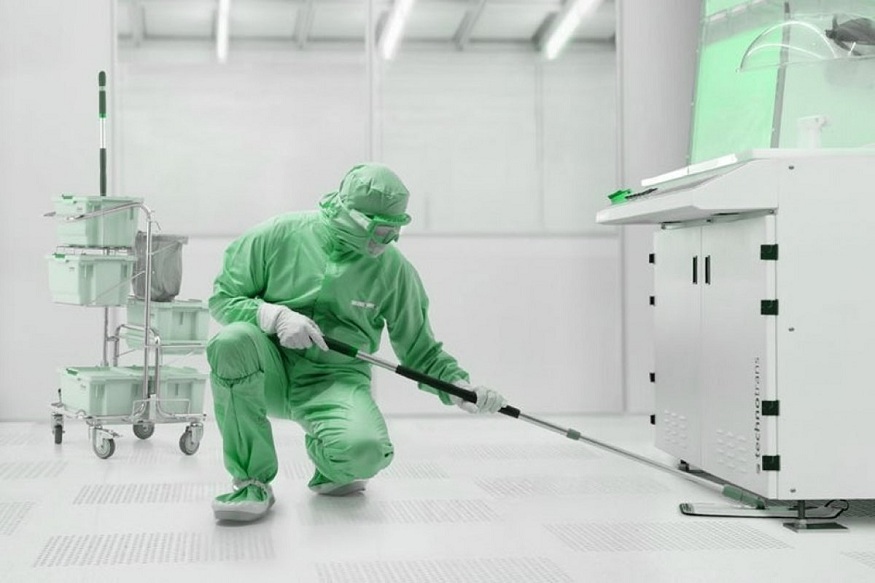In a world where precision, purity, and particle control are non-negotiable, the concept of Prudential Cleanroom Services takes on an entirely new dimension. Forget the simple act of sweeping a floor or wiping a surface; in a cleanroom, sanitation is a science governed by rigorous standards and meticulous protocols. These specialized environments are the pristine wombs where everything from life-saving medical devices and cutting-edge microchips to groundbreaking pharmaceuticals and advanced aerospace components are created. The success of the work performed within them hinges entirely on a state of controlled contamination, and the unsung hero of this delicate balance is a highly specialized sanitation process that goes far beyond a broom.
The definition of cleanroom literally regulated atmospheric environment within the low amount of such types of pollutants as dust; air microbus; aerosol particles and chemical vapor. This control is achieved by filtering the air, pressurizing the room, and strictly regulating entry and all internal activities. However, the most critical element in maintaining this sterile ecosystem is a sanitation protocol that is both scientific and relentless, designed to prevent the introduction of contaminants at every step.
Beyond Brooms and Mops
The tools used in cleanroom sanitation are a world away from those found in a typical home or office. Brooms are strictly forbidden, as they stir up and redistribute particles. Instead, specialized vacuum cleaners with HEPA filters are used to capture contaminants without re-releasing them. Mops and cleaning cloths are made from synthetic, ultra-low-shedding materials that are pre-saturated with sterile cleaning agents to prevent any particle generation.
The cleaning agents themselves are also highly specialized. They are chosen for their effectiveness against both particulate and microbial contamination, and must not leave behind any residue that could become a contaminant itself. The process often involves a two-step approach: a detergent to break down and lift contaminants, followed by a disinfectant to eliminate microorganisms. All cleaning solutions and wipes are typically sterile and individually packaged to prevent external contamination.
The Process: A Systematic and Meticulous Ritual
Cleaning the cleanroom is a ritual not an ad hoc it follows a strict, documented procedure known as a Standard Operating Procedure (SOP). The process is typically performed by trained and certified technicians who understand the science behind their work.
The cleaning process usually starts from the cleanest area and moves to less critical areas, and from top to bottom. Ceilings are cleaned first, followed by walls, equipment, and finally, the floor. The technique itself is precise. Wipes are used in a unidirectional, overlapping motion to ensure no surface is missed and that particles are moved away from critical areas. Mops are used with a specific figure-eight motion to capture contaminants. Every single surface, from door handles to air vents, is addressed.
The frequency of cleaning is also rigorously defined. A cleanroom may be deep-cleaned weekly, with daily cleaning of critical areas and continuous cleaning during operational hours. Any cleaning machines will belong to that particular cleanroom and will never venture out of the setting since it might lead to cross-contamination.
The Human Factor: Training and Compliance
Ultimately, the human being has been found to be the greatest source of contamination in any cleanroom. This is why the human factor in cleanroom sanitation and operation is so critical. All personnel, including cleaning technicians, must undergo extensive training in cleanroom protocols, including proper gowning procedures and the strict rules of movement within the space.
Compliance with these protocols is non-negotiable. Regular audits, particle monitoring, and microbial testing are used to ensure that sanitation standards are being met. During the process of undertaking the SOP, any slight deviation is a risk that needs to be attended to without further delay. The culture within a cleanroom environment is one of constant vigilance, where everyone, regardless of their role, understands their part in maintaining the integrity of the space.
Conclusion: The Unseen Foundation of Innovation
Cleanroom sanitation is a meticulous, science-driven, and highly specialized discipline that is far beyond the scope of a simple cleaning job. It is the unseen foundation upon which some of the world’s most advanced and critical work is built. By understanding contamination, adhering to strict international standards, utilizing specialized tools, and following meticulous procedures, cleanroom sanitation experts ensure that these pristine environments remain exactly that: pristine. Their work is a silent but essential contribution to the integrity of countless products, from the microchip in your phone to the life-saving vaccine in a vial, all of which depend on a level of cleanliness that begins with a methodical process, not a simple broom.

